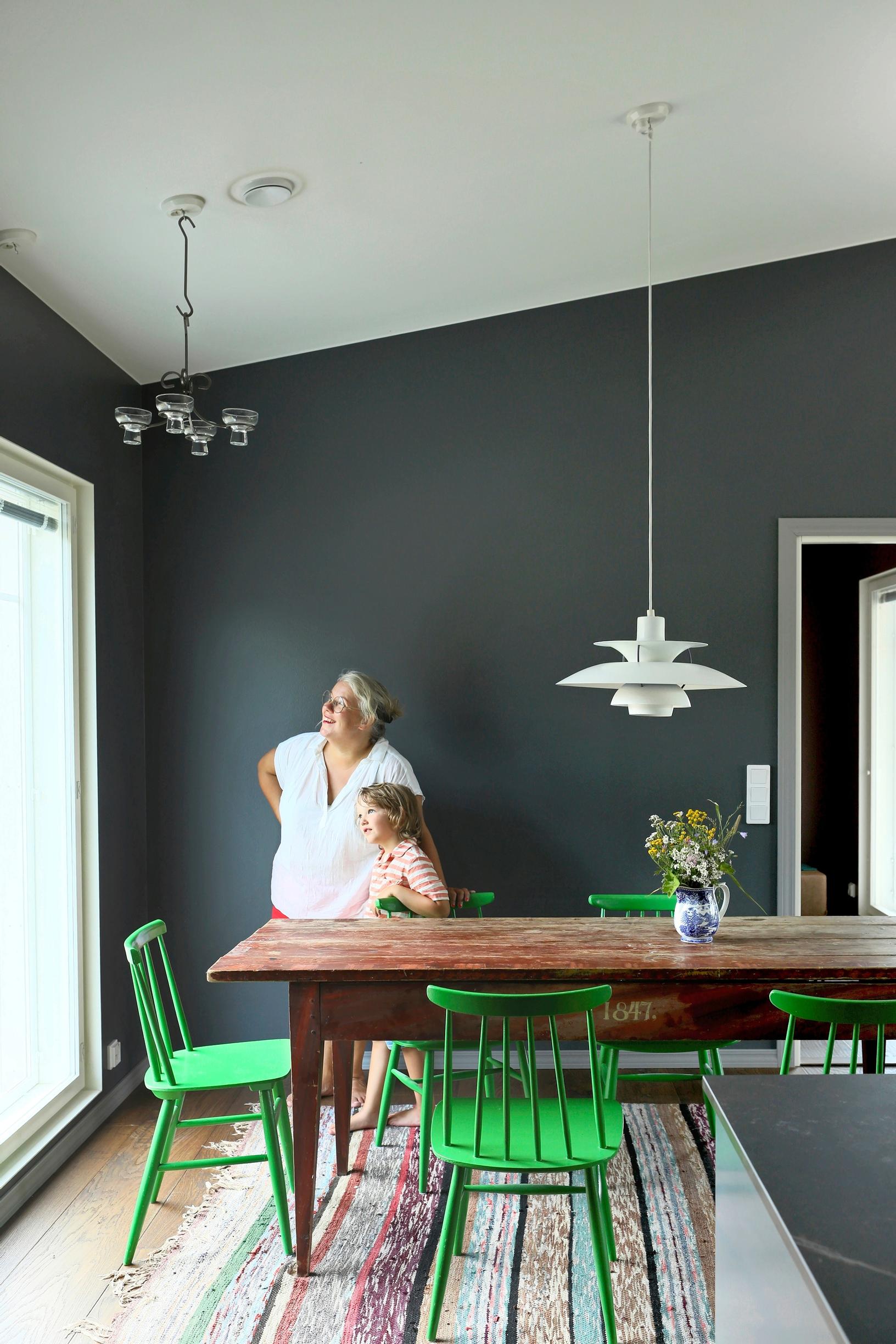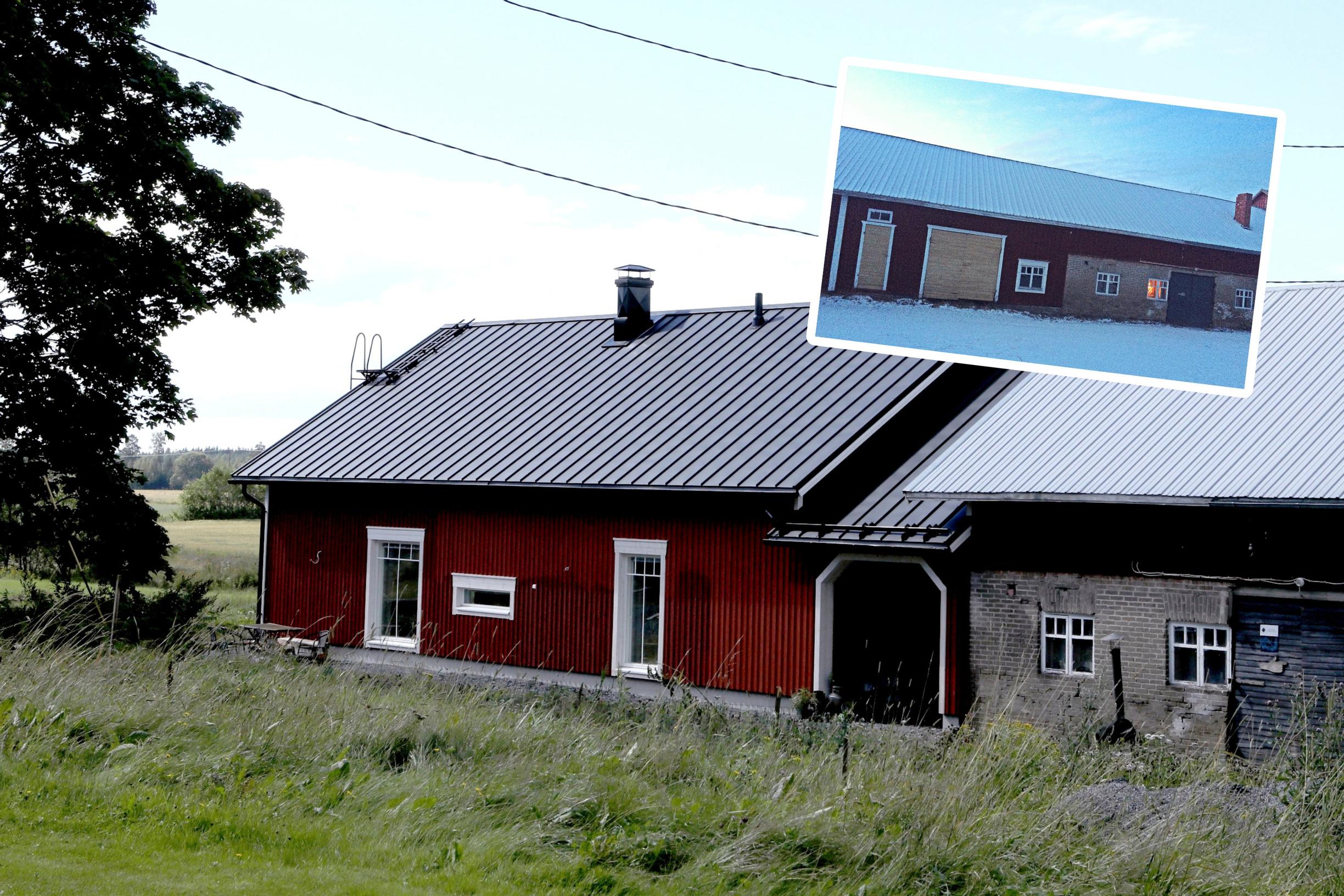
An old hay barn into a summer home? When their bold plan failed, Åsa and Johan had a new barn-like house built instead
“When I was a child, the old barn was my favorite place to play. It feels amazing that we now live here.” Stockholm-based Åsa Gribbe and her family spend all their holidays in Närpiö, Finland, where her family roots go back to the 1600s. Their new summer home was inspired by an old hay barn.
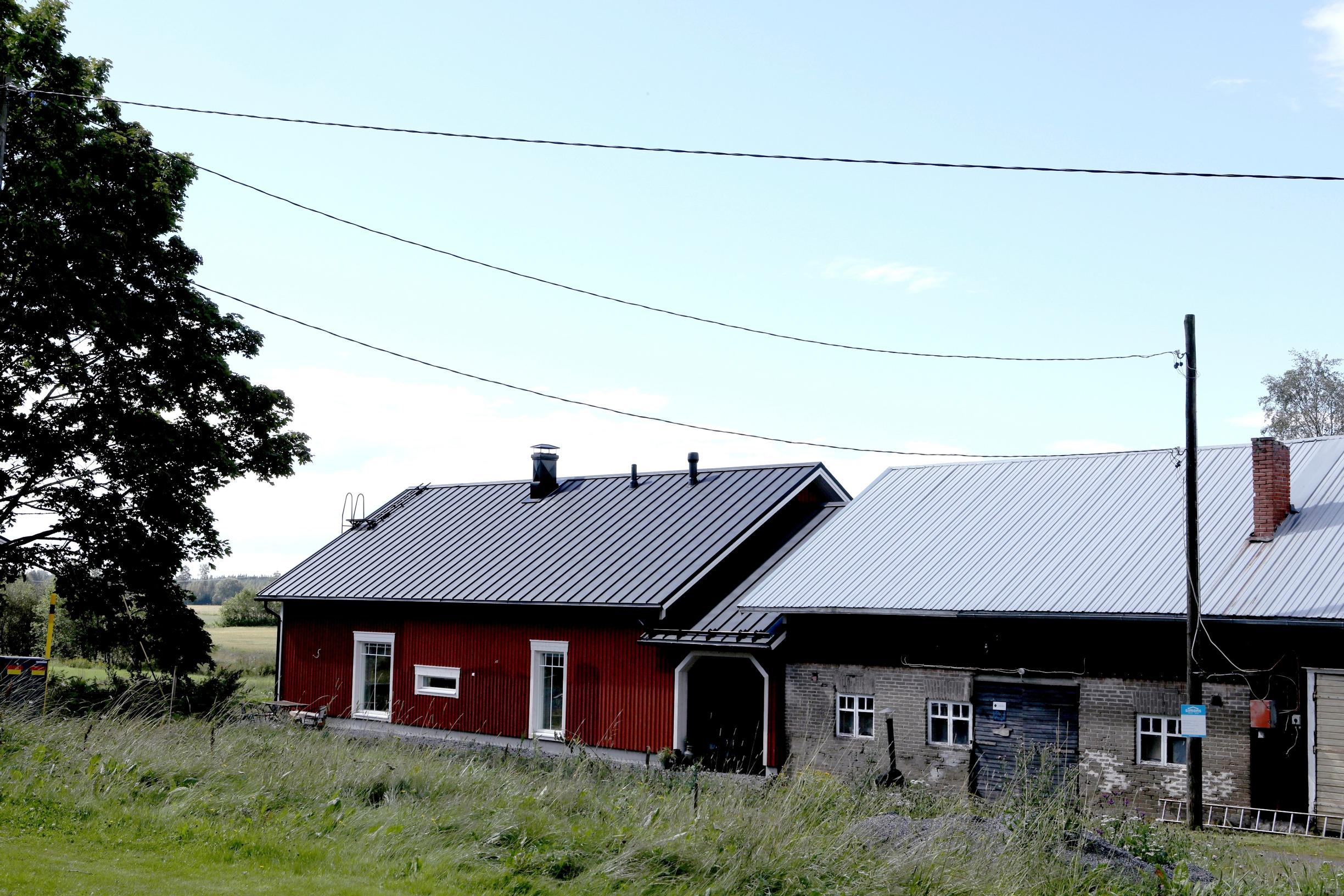
Living here Åsa and Johan Gribbe and sons Elmer, 6, and Nils, 5. Instagram: @nygardas1.
House A Pesante concrete prefabricated house by Simons Element completed in 2022. The 135 square meter house includes three bedrooms, living room, kitchen, two bathrooms, sauna, and utility room. Geothermal heating with water-circulated underfloor heating. 2,000 square meter plot.
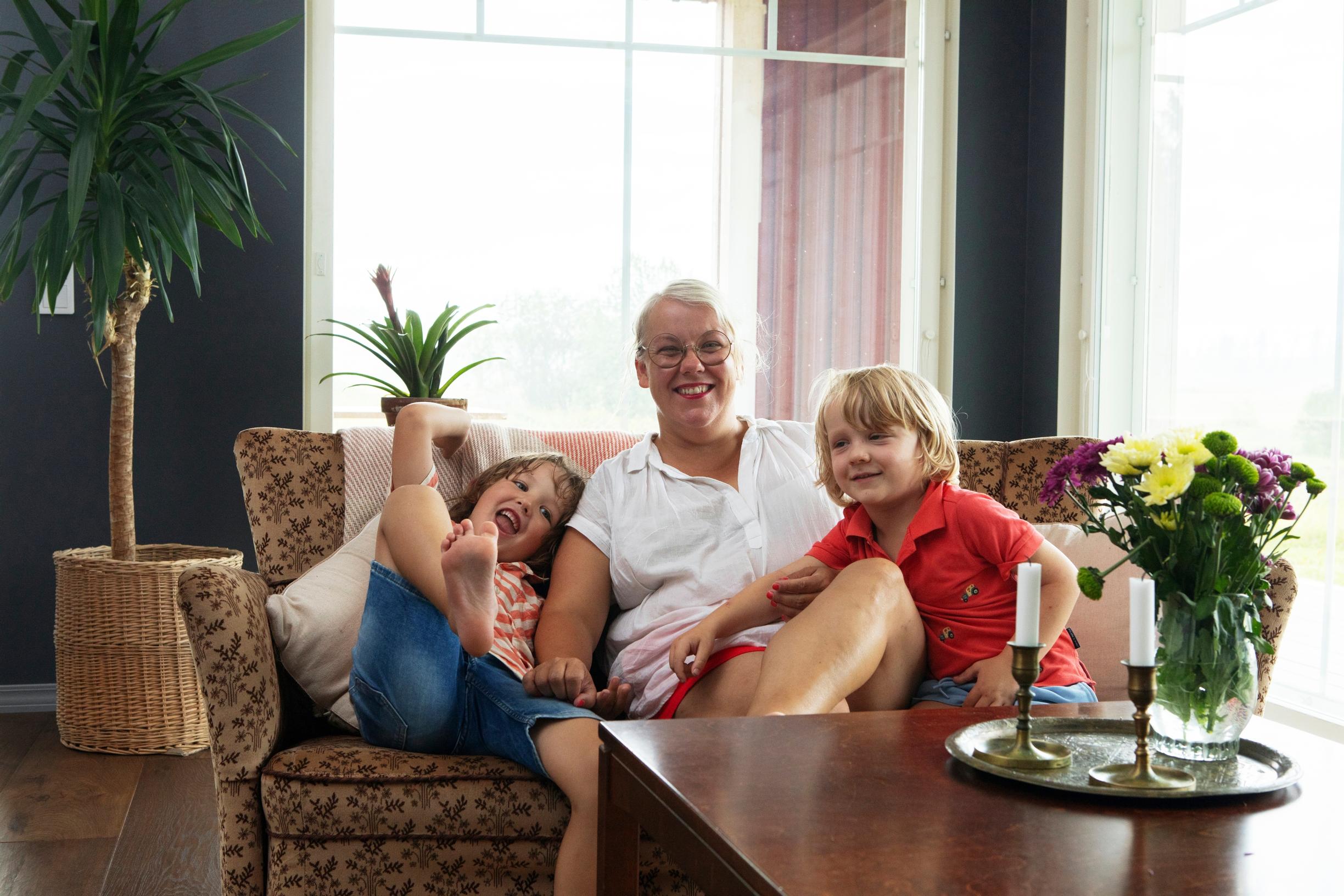
Giggles fill the living room. Åsa Gribbe is tickling her children, and the boys are in fits of laughter. Just a few years ago, an old hay barn stood in this very spot.
“Fortunately, we’re on the home stretch with the construction and decoration. We just have a few small things left to do, like the built-in bookshelf for the living room end wall. But we need to take a short break and gather energy and resources for that project,” says Åsa, looking around.
The Gribbe family of four lives in Stockholm. However, Åsa’s family roots run deep in the soil of Närpiö, Finland. That’s why the family is here now.
“Our family has owned this land since the 1600s. I’m the tenth generation here. We spend all our holidays in Närpiö,” says Åsa, who works as a teacher.
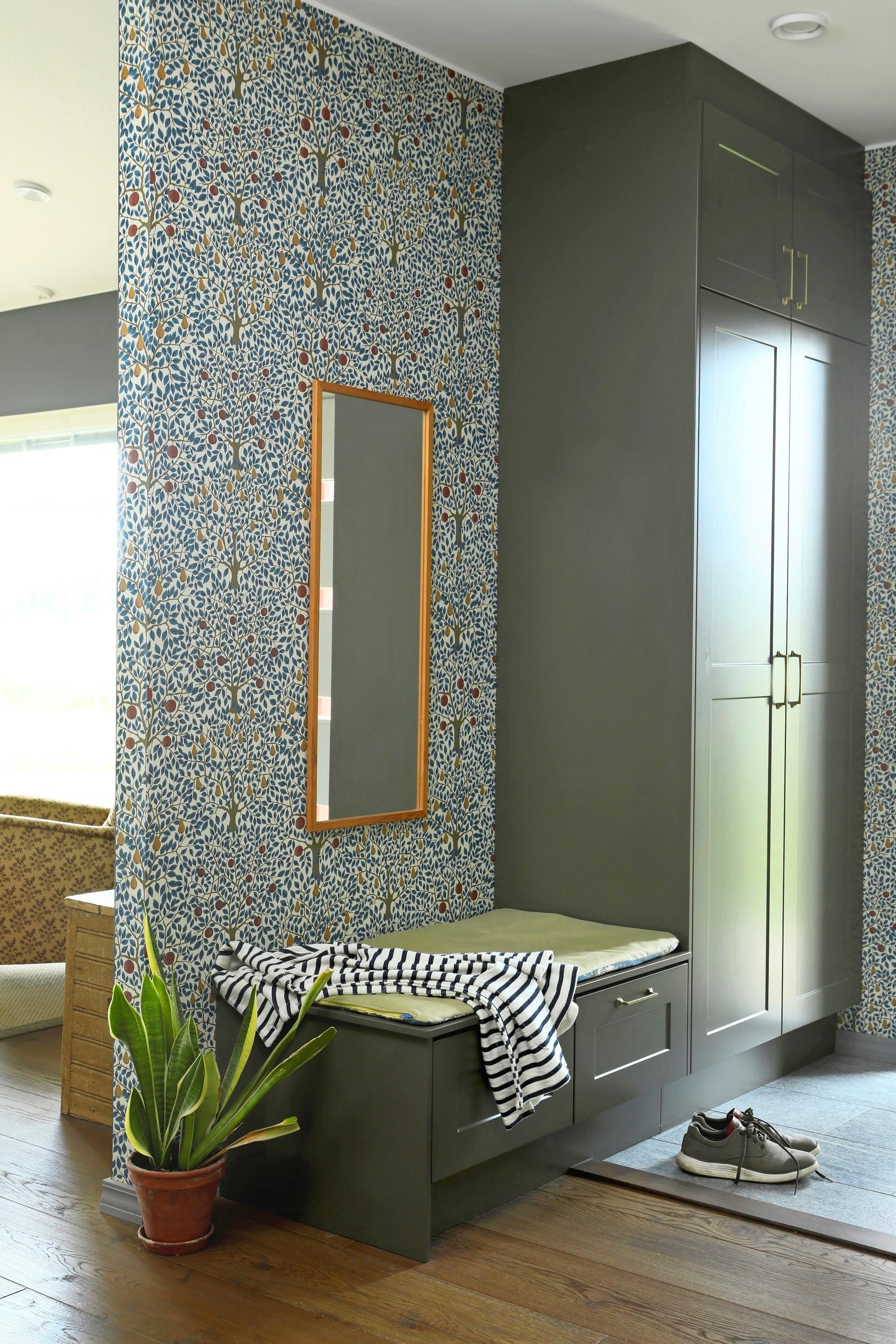
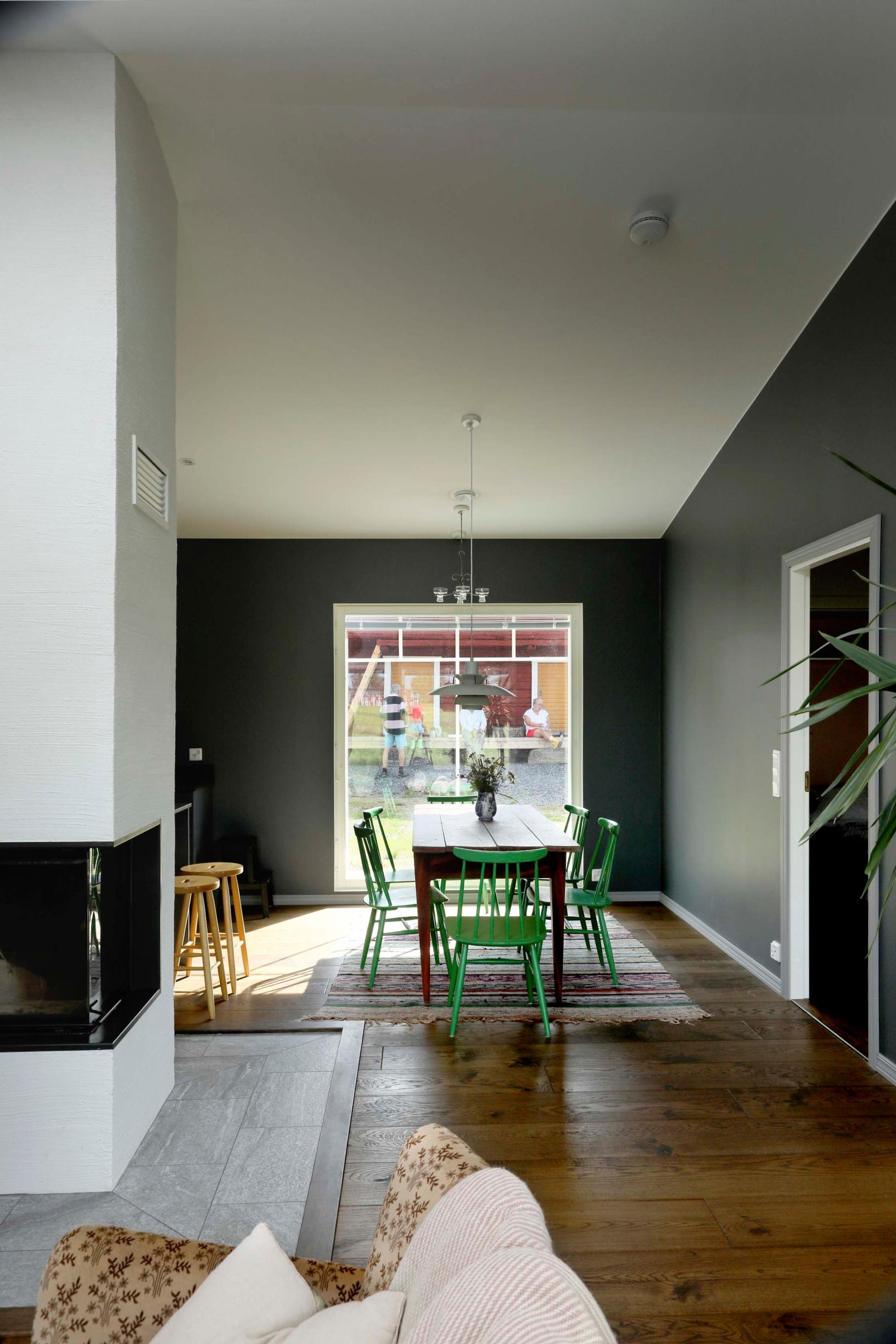
In the kitchen, Åsa’s mother Christine Rosenback is busy at work. She and her husband live in this two-generation house year-round.
Traditions were an important criterion when Åsa’s family began considering getting a summer home. Should they buy a summer cottage by the sea, or something completely different?
“It didn’t feel right to sell this place. I felt that if we were to get a home in Finland, it should be right here.”
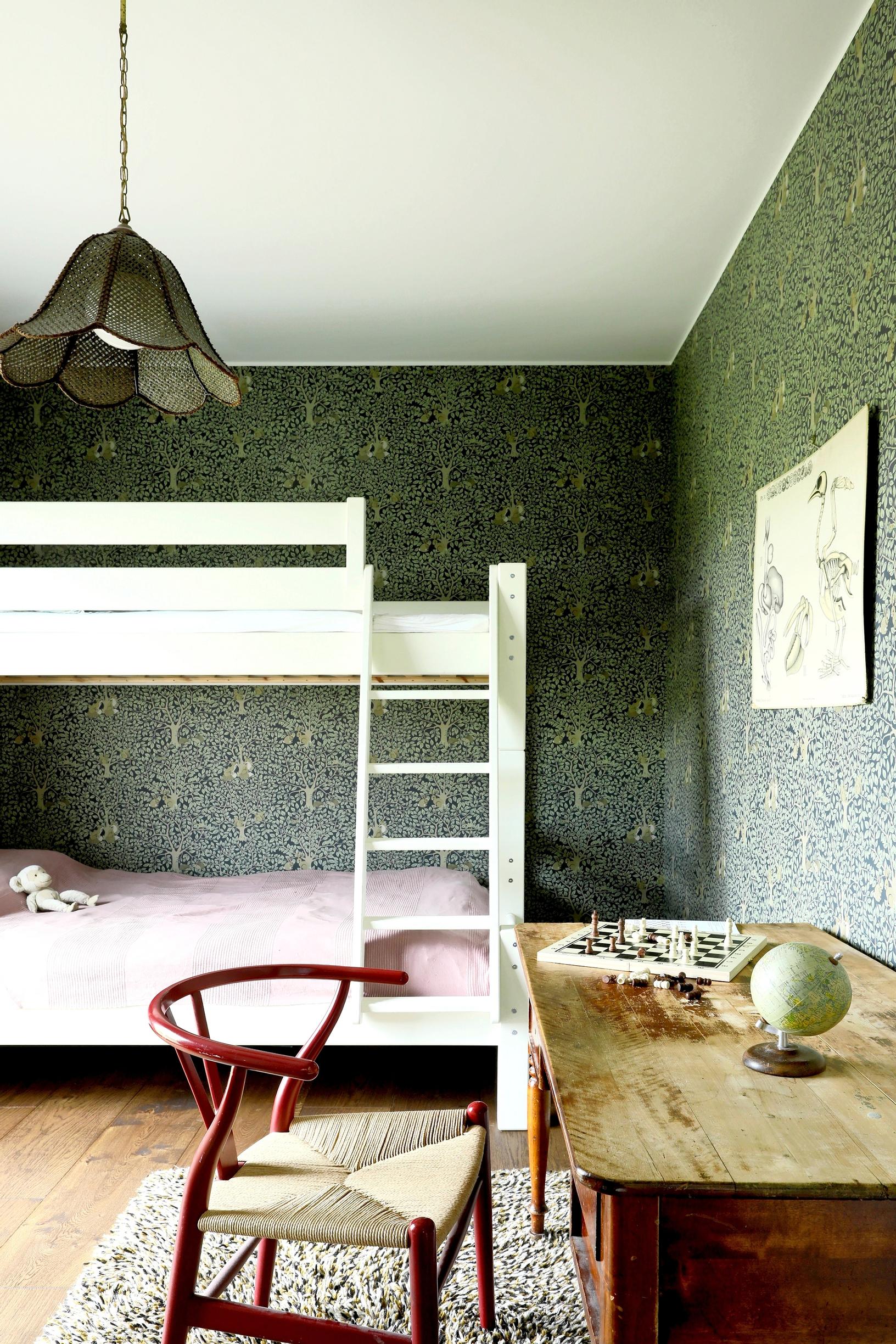
Could a barn be turned into a home? This was the question Åsa and Johan pondered in the summer of 2019.
The old main building of the family estate had been demolished in the 1990s. A new house had been built in its place, which was later sold. They needed a new place to settle. Preferably, it would be an old building.
“Johan is a historian by profession. We’re both interested in history and old houses,” says Åsa.
The couple considered relocating an old log house to the plot. However, they couldn’t find a natural place for it. Then Åsa and Johan thought of the old hay barn on the property, built partly with a log frame and partly with a timber frame. Could it provide the framework for a house?
This is what the old barn looked like:
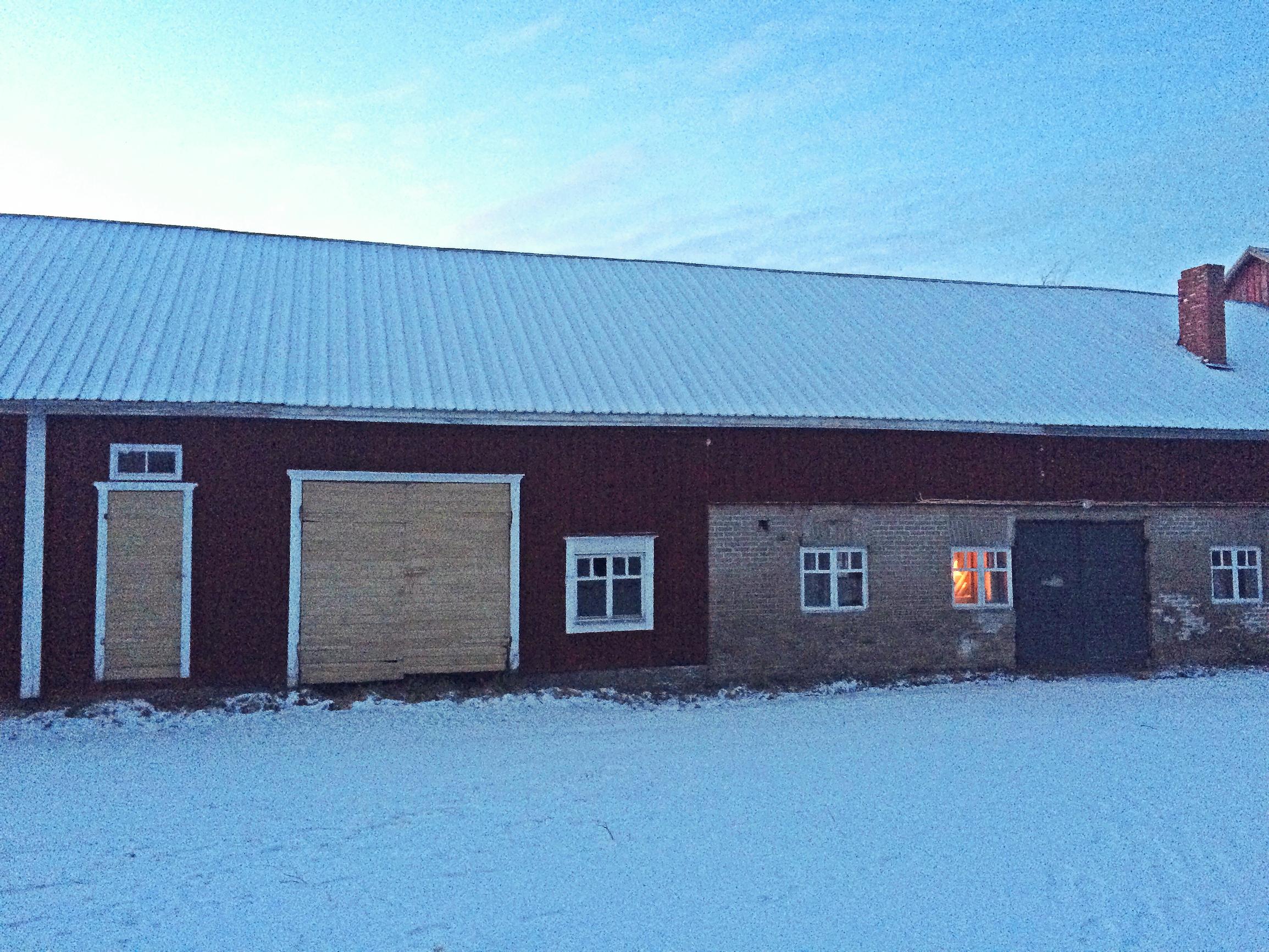
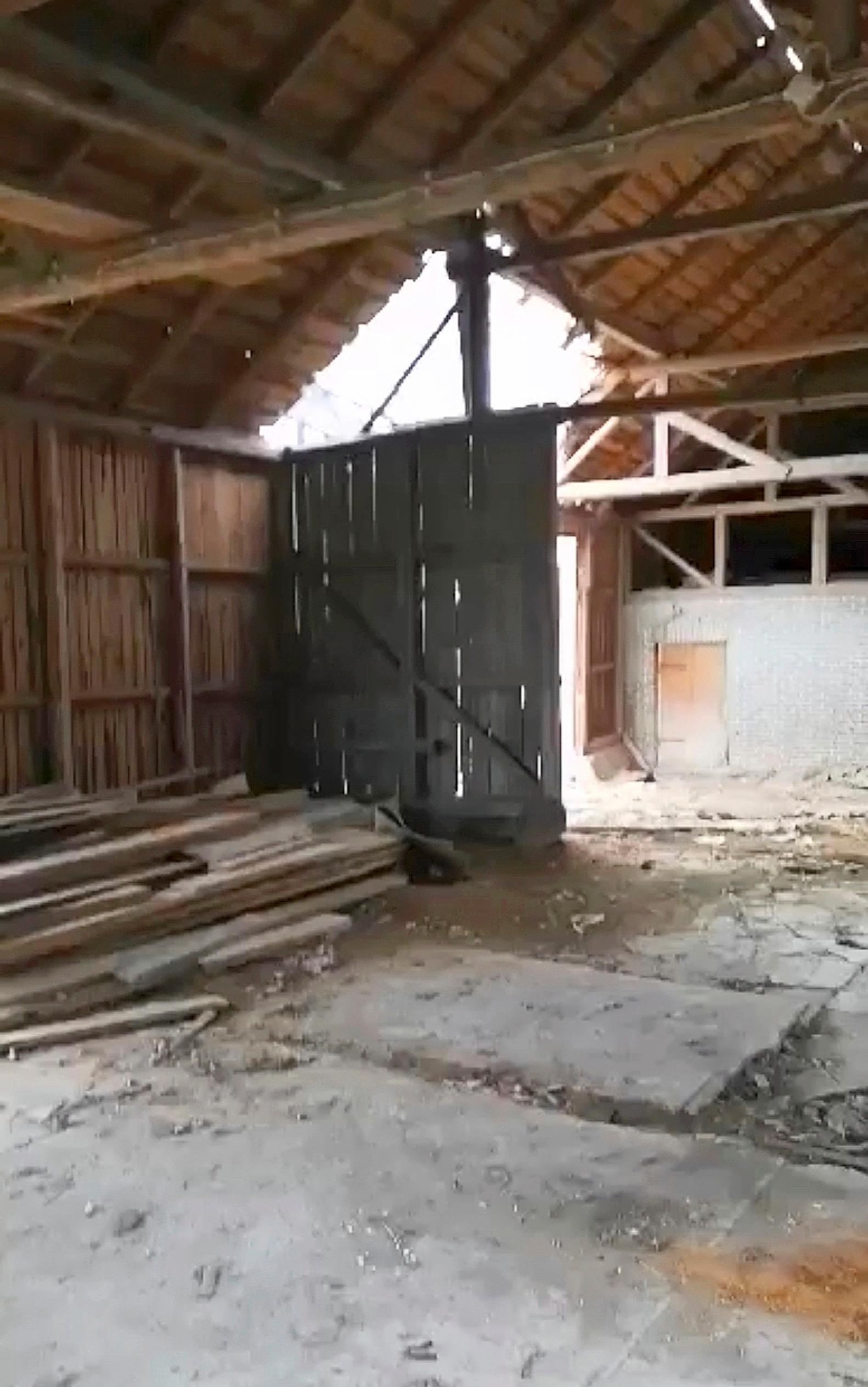
When Åsa and Johan examined the old barn’s structure, they let their imagination run wild. Could they pour a new concrete floor under the barn and leave the log walls and roof beams exposed? Or create large windows exactly where they would have the most beautiful views of the fields?
“However, according to the architect and the builders, it wasn’t worth building a house from the hay barn. It would have had to be practically dismantled completely and then reassembled. It would have been too complicated and expensive.”
Once they had let go of their dreams of a “barn flip”, the couple had to come up with something more realistic.
“We started looking for a prefabricated house that would match the style and size of the old barn. A prefab house was the most sensible option for us, since we lived in Sweden and couldn’t take part in the construction.”
They found a suitable house in a local house manufacturer’s collection. The design of the house by Simons Element was almost perfect. It was only half a meter narrower than the old barn.
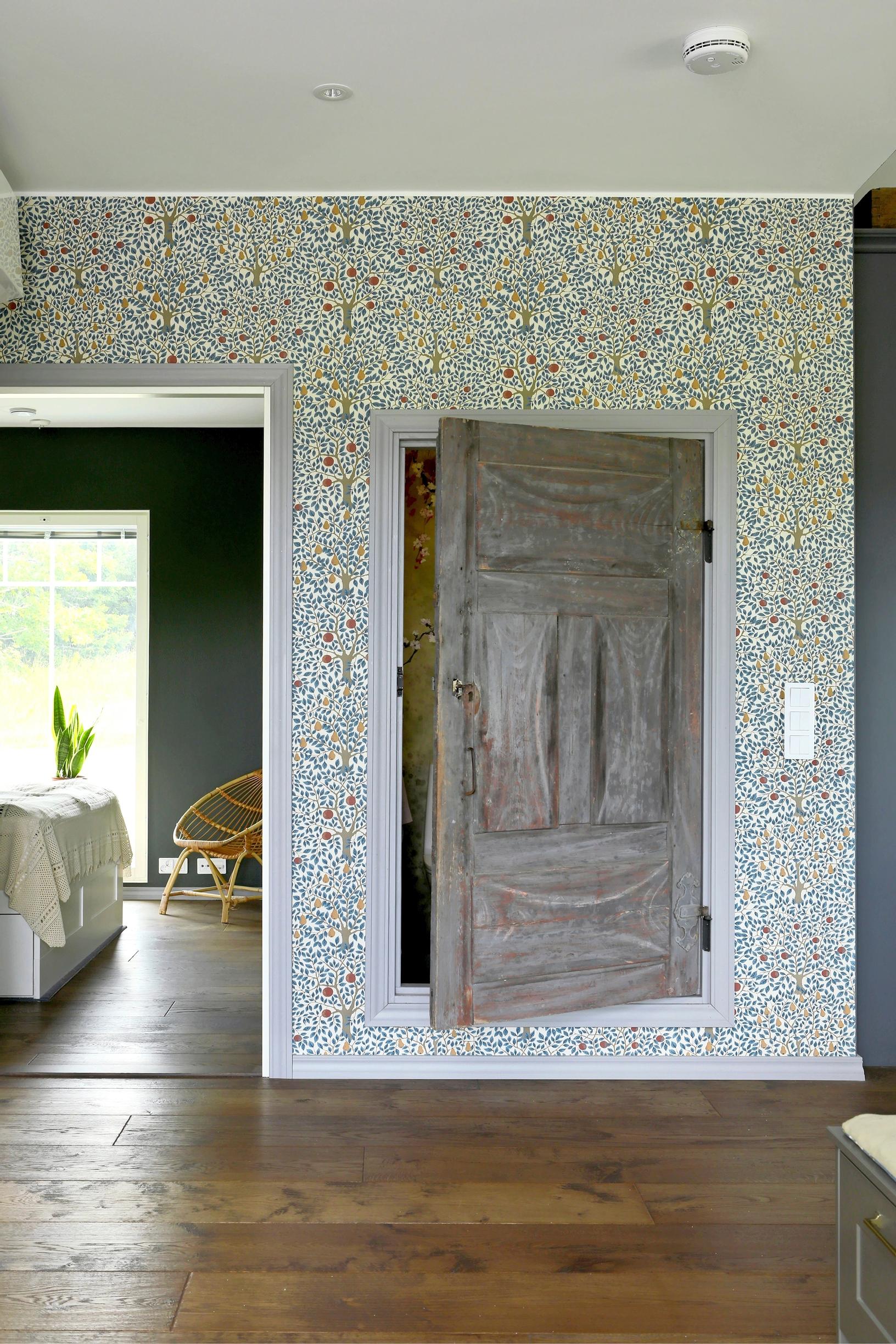
“Decide what’s most important to you. Think about where you’re not willing to compromise, and put your resources there. Dare to think big.”Åsa Gribbe
At the drawing board, they widened the house to the size of the barn. The roof angle and height were also adjusted to match. They designed a space for a wood stove in the kitchen, and finally, the floor plan was flipped.
“By flipping the floor plan, we got the living room and large windows facing the field.”
Fire regulations caused some headaches. They weren’t allowed to build the new house directly connected to the old cow barn.
“The Simons designers came up with the idea of creating a pass-through archway between the buildings. With this solution, we got an everyday entrance at the end of the house and a space in front of it to store bicycles, for example.”
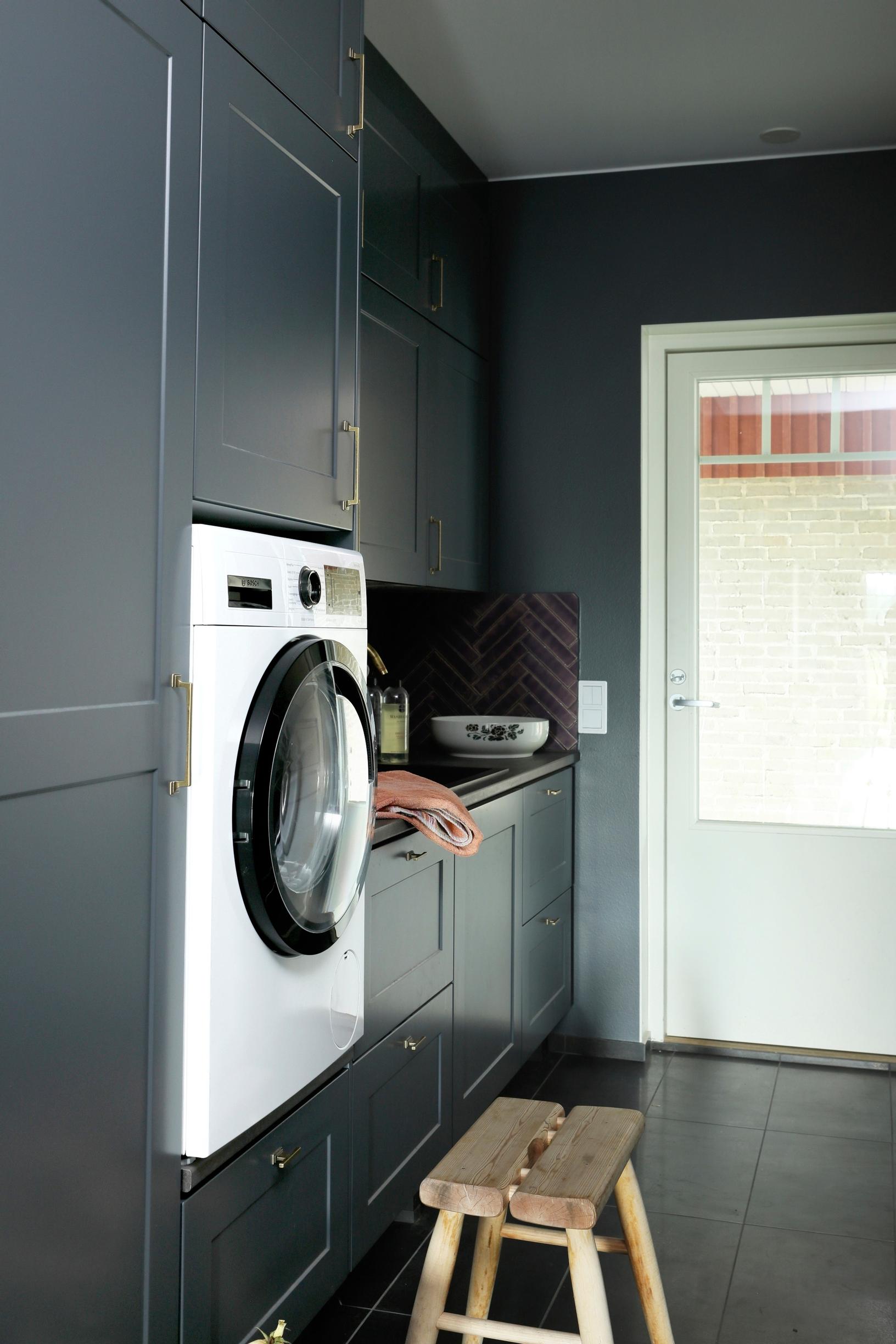
Construction began with the demolition of the hay barn in spring 2021. The family was in Stockholm at the time.
“Fortunately, my parents were on site throughout the whole construction. We also participated in the building process via FaceTime.”
The old hay barn was removed from the side of the cow barn
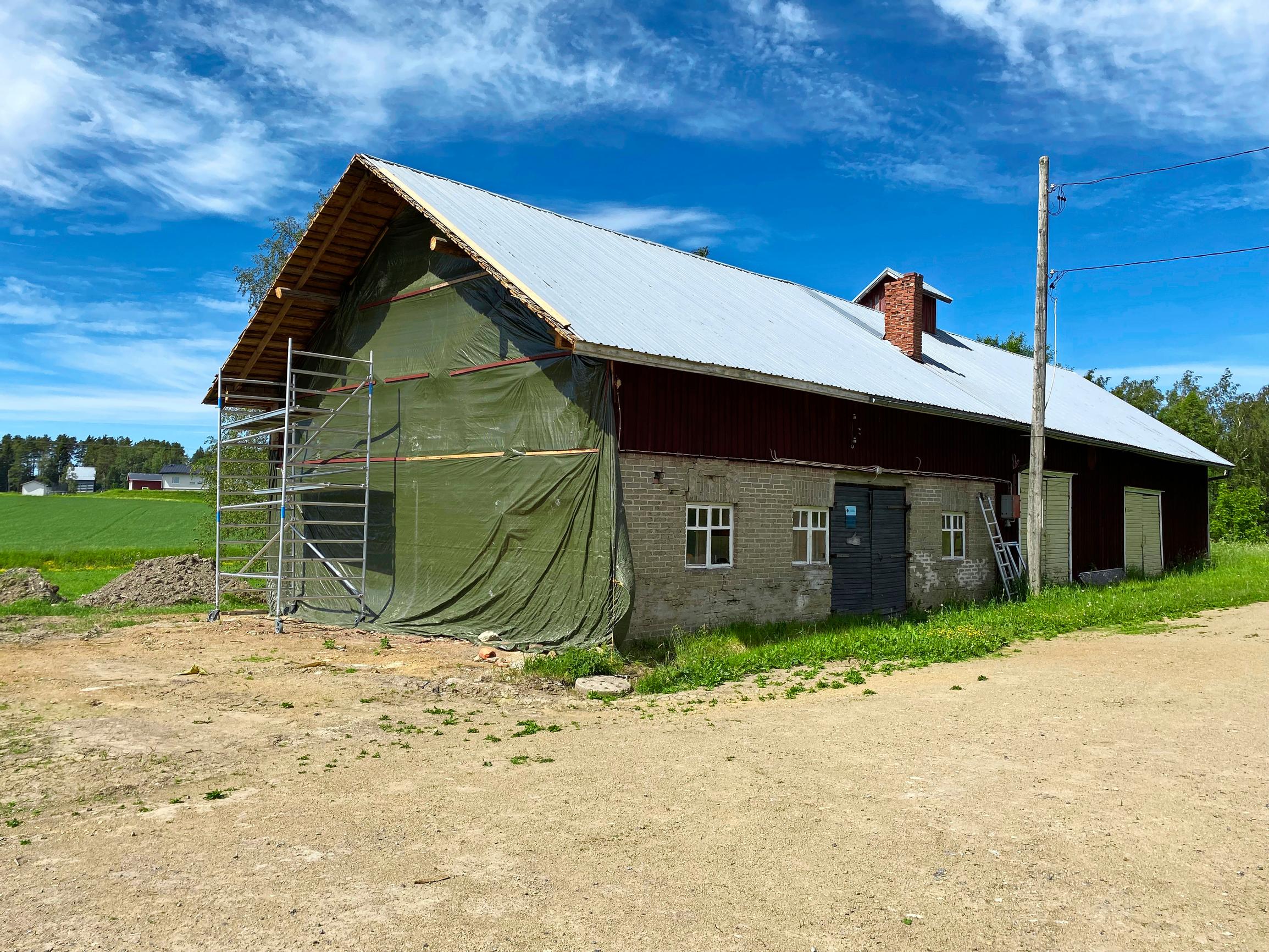
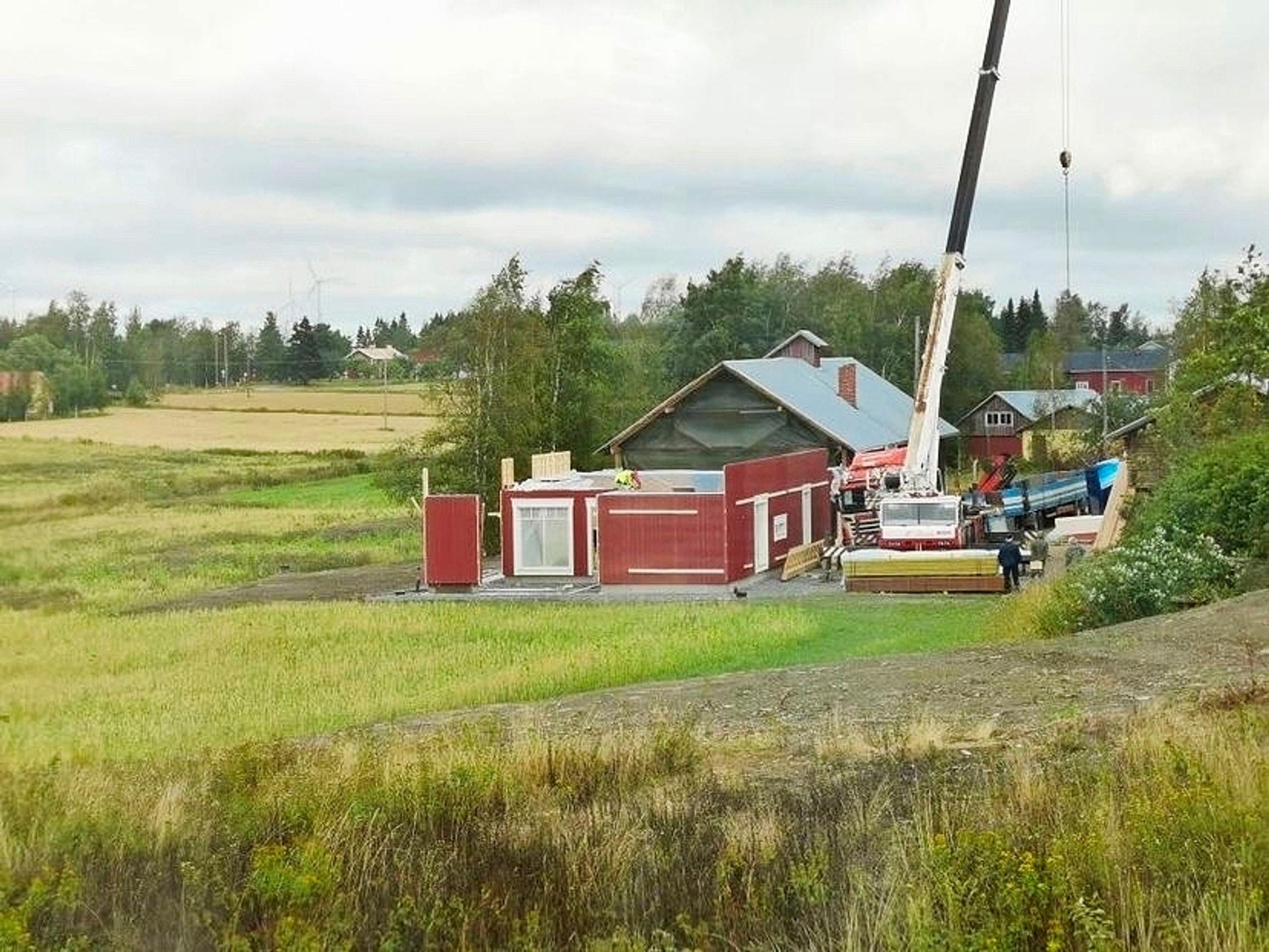
The well-preserved logs from the oldest part of the barn, dating back to the 1700s, were salvaged.
In June, the family was on site to watch the house foundations being poured. At the beginning of August, they packed their things and returned to Sweden. The prefab elements arrived at the site the following week.
Via FaceTime, Åsa and Johan watched as a nearly identical-looking building rose in place of the old barn in just a few days. Then it was time to move on to the interior work.
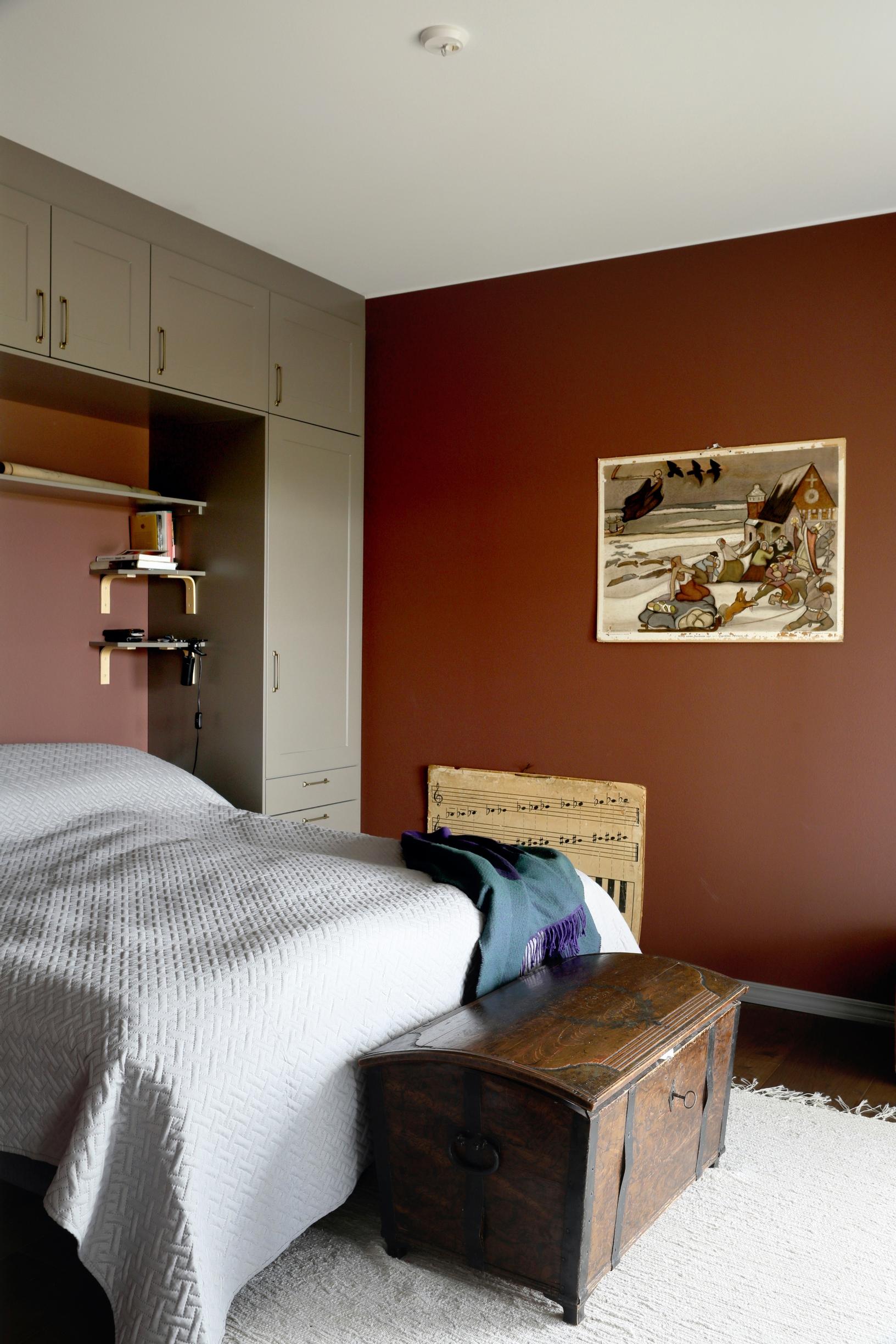
For the interior, Åsa and Johan collected images of homes, atmospheres, and materials they liked. Both of their collections featured old houses and dark colors. Åsa also created room-specific mood boards. They sought concrete inspiration from the Närpiö local history museum. From there, they adopted dark and light gray, maroon, moss green, and dark blue for their home's color palette. For example, the kitchen cabinets and the kitchen and living room walls were painted in the same dark gray shade.
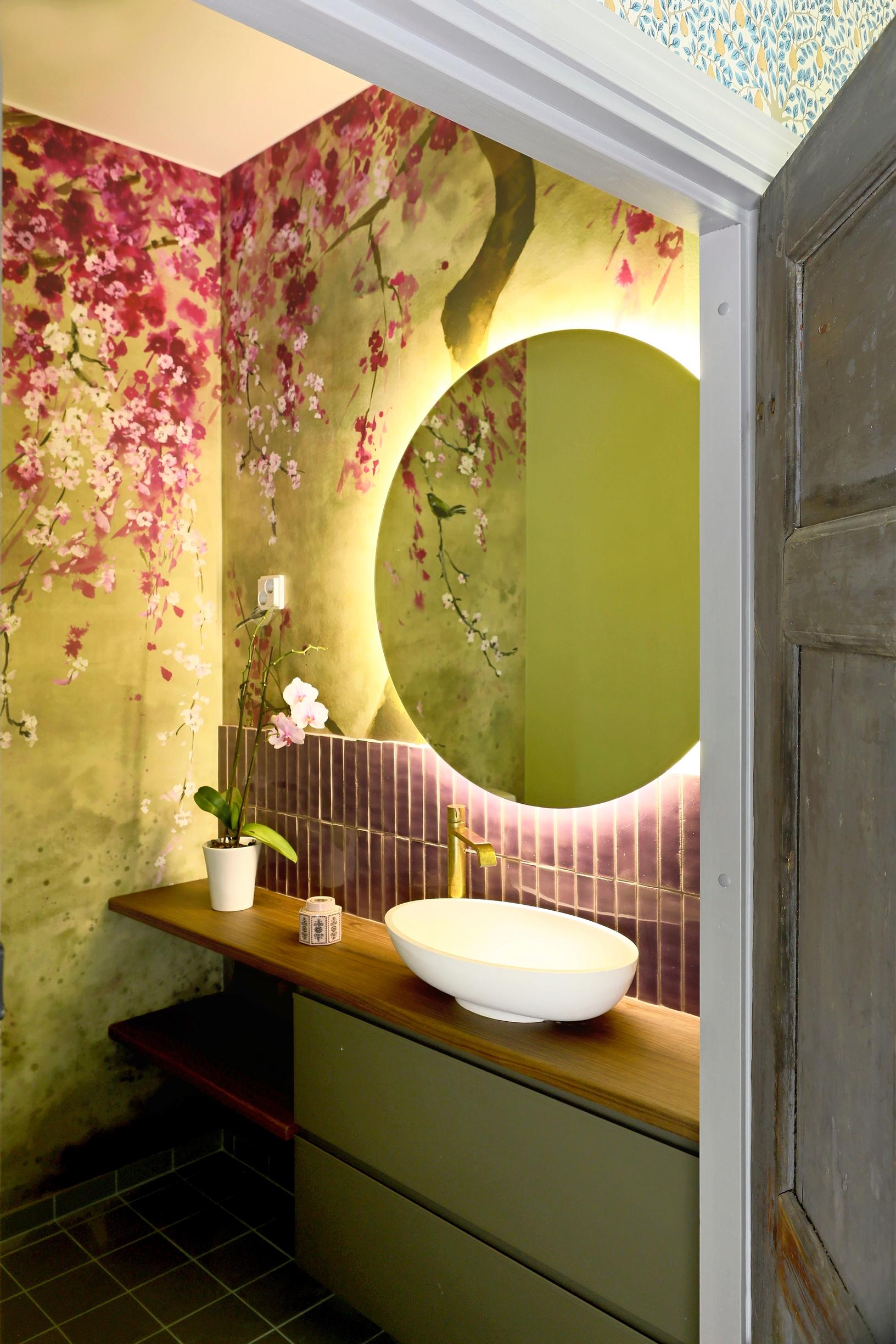
For wallpaper choices, Åsa trusted her own taste.
“The Designers Guild wallpaper in the small bathroom was one of the first things I knew I wanted here.”
For that same bathroom, Åsa came up with the idea of using a two-hundred-year-old panel door from her father’s storage.
“It was difficult for the builders to understand that we really wanted a door so short that there’s 30 centimeters of wall at the bottom. However, the old door is a major contributor to the atmosphere in the entryway.”
According to building regulations, the house also has a second bathroom that is wheelchair accessible.
Åsa purchased all tiles, faucets, and wallpapers well in advance.
“We had renovated our home in Stockholm, so I had compared the prices of different products in Finland and Sweden. It was cheaper in Sweden.”
A real stroke of luck was the sale at Kakelspecialisten in Stockholm. There, Åsa purchased all the tiles and faucets in one go.
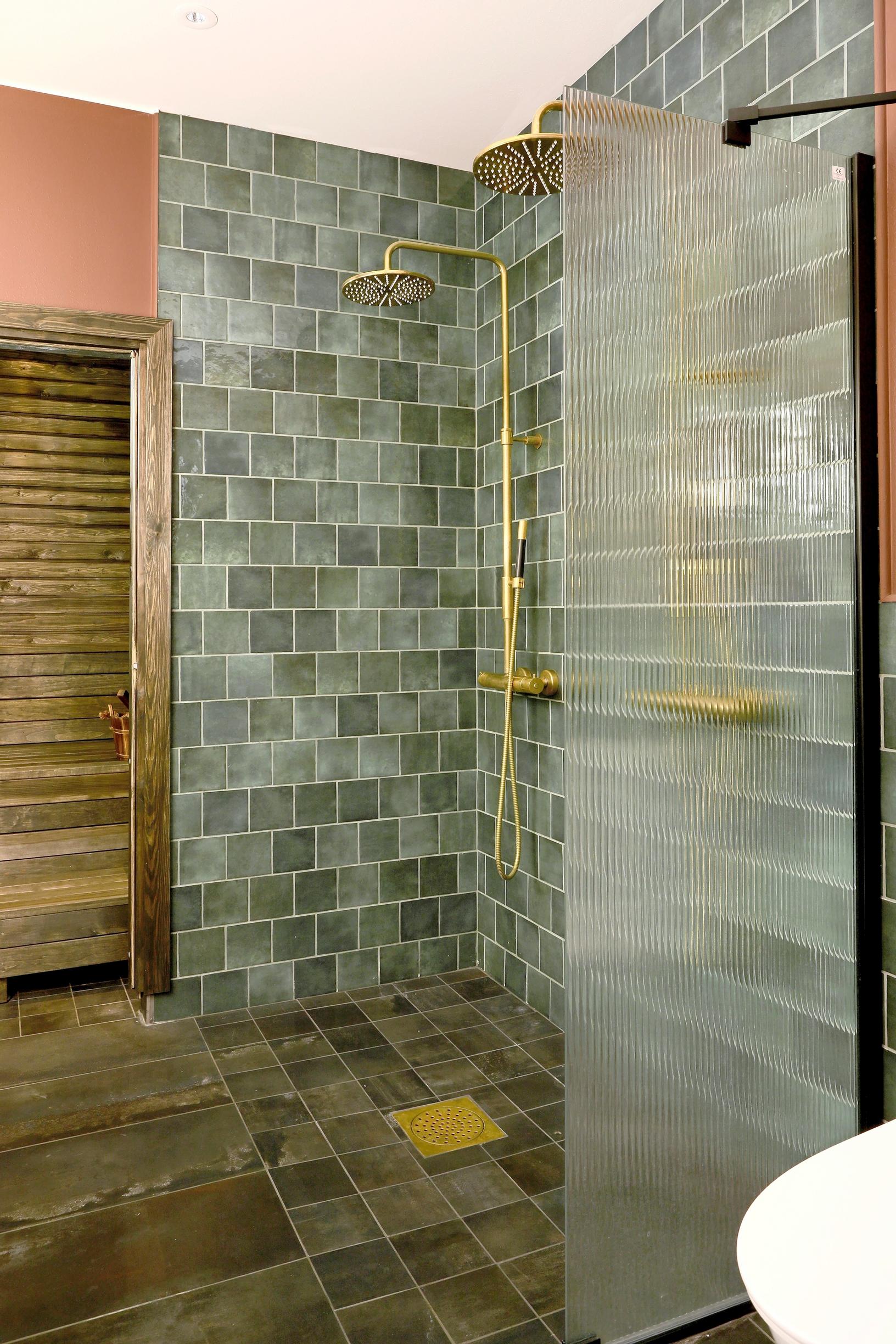
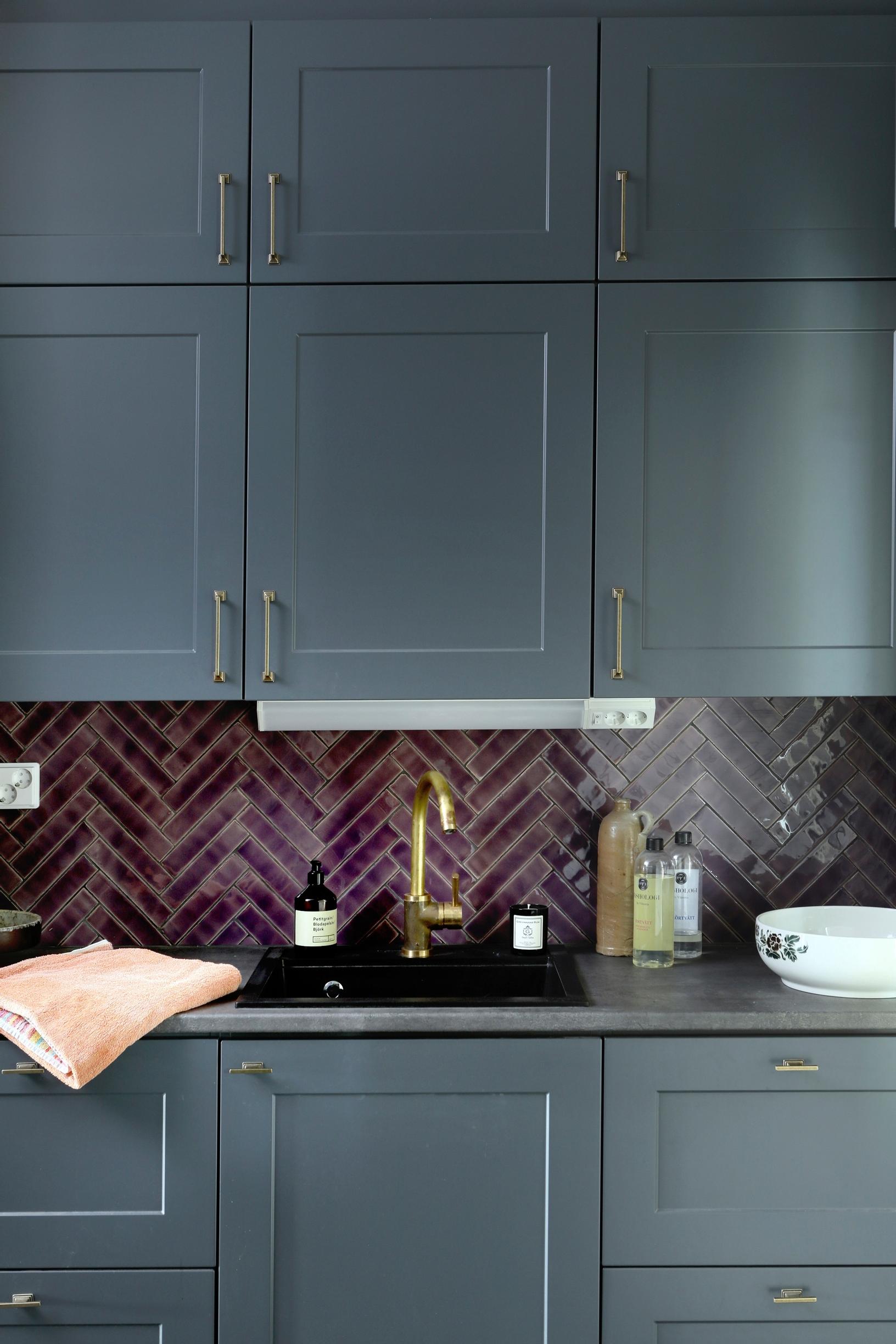
Rustic flooring material that matched the home’s style was found surprisingly close to the construction site. Novafloor’s 30-centimeter wide hand-carved and oil-waxed plank flooring came from Vaasa.
On Maundy Thursday 2022, the family lit a fire in the living room fireplace for the first time and brewed coffee on the wood stove. That moment has remained in Åsa’s mind as a significant milestone.
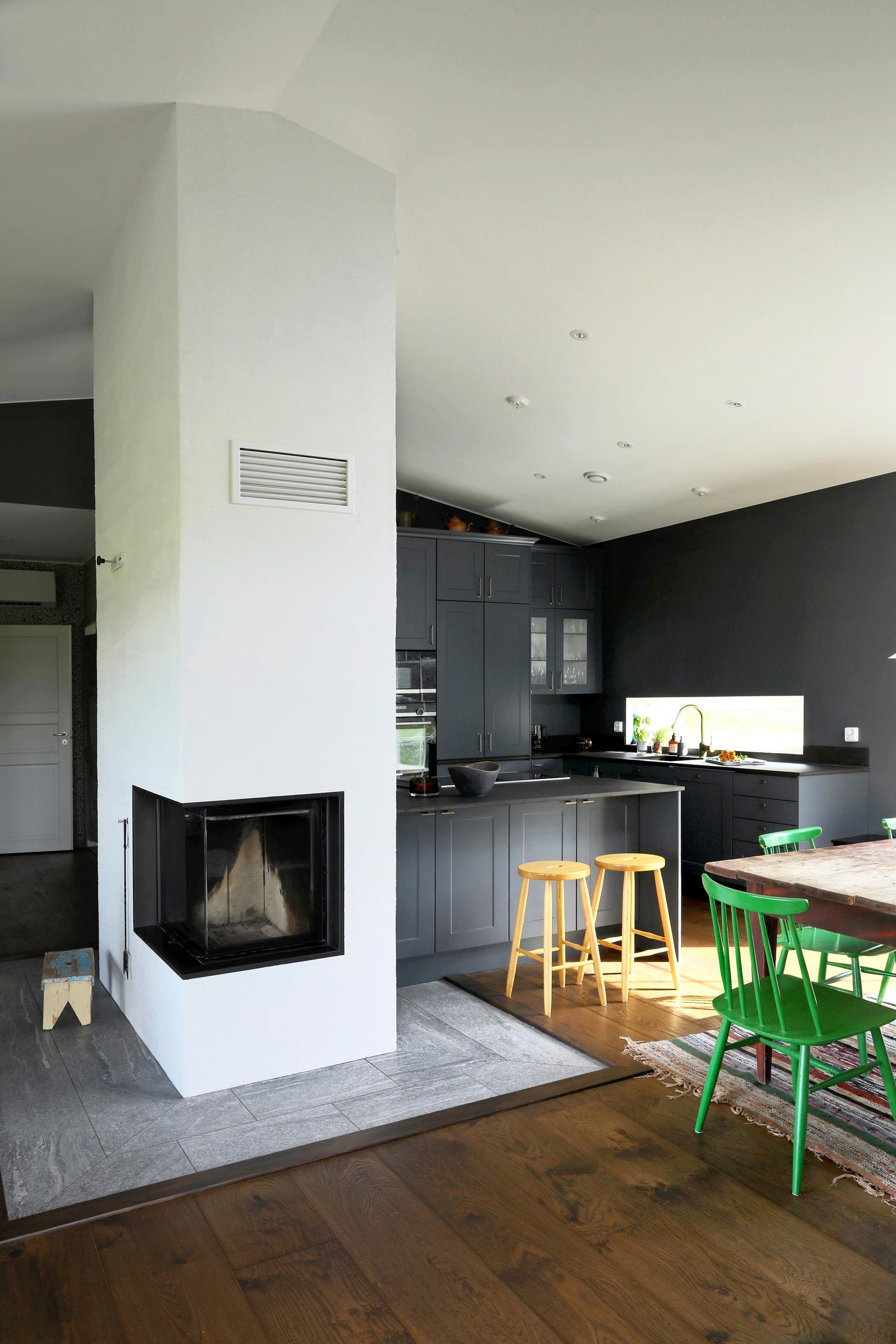
There was still a final spurt ahead to get the house ready before Midsummer. The schedule held, and the family received their occupancy permit during Midsummer week.
“When I was a child, the old barn was my favorite place to play. It feels amazing that we now live here. Life is good here,” says Åsa.
